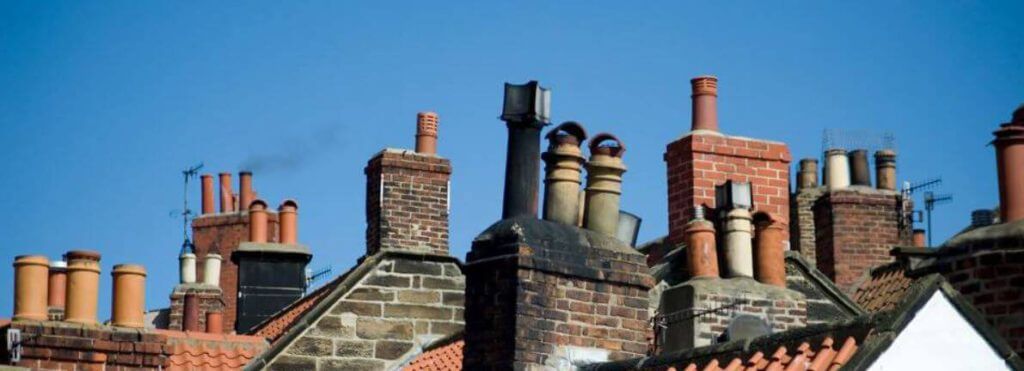Are you worried the government is planning to ban log burners and multi-fuel stoves?
Don’t be.
The Clean Air Strategy sets out the government’s plans to educate consumers and introduce measures that will make sure people who already own a stove burn cleaner fuels and so emit fewer pollutants.
It’ll also ensure new stoves are highly efficient by 2022.
The new Clean Air Strategy promises to cut particulate matter, which is the sum of all particles suspended in air, many of which are hazardous to 30% by 2020 and 46% by 2030.
It will tackle pollution from many areas including transport, farming and domestic burning.
According to the government report, burning solid fuel (such as wood and coal) currently produces 38% of the UK’s emissions of particulate matter.
Many people are unaware emissions in the home increase personal exposure to pollutants and contribute significantly to our overall national emissions.
Luckily, we can all do our bit to make a difference, from reducing how much we burn and using the right fuel to only buying an efficient stove if you’re upgrading yours or keen to get one.
Here are three steps to help get you started.
1. Don’t let your log burner or multi-fuel stove smoke

Wood creates more smoke – and potentially harmful emissions – if it doesn’t have a good enough supply of oxygen. It also increases sooty build-up in your chimney, which could restrict gasses from escaping. Use these tips below to ensure your stove doesn’t.
- Use the air controls to ensure your fire has visible flames, showing that there is a good supply of oxygen.
- Whether you’re burning wood or coal, leave the door ajar and open air vents while you’re getting the fire started. Once the fire is established, use the air vents to keep the fire burning
- Ensure the flue stays at the right temperature throughout by making sure the fire is constant. This will help avoid carbon monoxide – an odorless and potentially deadly gas – coming down the chimney.
- Having your chimney swept regularly is vital for ensuring it doesn’t get overloaded with sooty deposits. You should get it swept quarterly, while it’s in use, if you burn wood or coal. If you burn smokeless coal, you should get it swept yearly. You can find a chimney sweep in your area by heading to sites like the National Association of Chimney Sweeps or Which? Trusted Traders.
- Defra-exempt stoves (also called Defra-approved) make it harder for wood to smolder and stop it from ever being completely starved of oxygen. If you need to update your stove, or buying new we’d recommend looking for one of these.
It’s also worth keeping in mind that, at present, all stoves must be at least 60% efficient. But by 2022, all stoves produced in the EU have to be at least 80% efficient. Some stoves on sale, called Eco-design Ready, already meet these criteria.

Use the right fuel for your stove
Some types of fuel, such as wet logs and house coal, produce far more particulate matter than dry logs and Low-Sulphur smokeless fuels, such as anthracite coal.
The government plans to bring into force legislation that will mean only the more efficient fuels will be on sale. This will include reducing the amount of wet wood on sale, or it only being bought to be seasoned at home, and restricting the amount of Sulphur in fuels.
2. Only burn dry wood on your stove

Burning wet wood produces more pollution and sooty deposits, and is less efficient, as it takes energy to burn off the water first.
- Only burn dry wood with a moisture content of less than 20%. This will maximize heat output and minimize smoke, soot and pollution. Ready to Burn, a new government-backed scheme put into place by Wood sure, sees ‘Ready to Burn’ logos added to wood that has 20% or less moisture content.
- You can reduce the moisture content of freshly cut wood by drying it yourself, which is called seasoning. To do this, it’s best to store the wood in a dry place for at least a year, preferably two.
- Make sure you never burn treated wood, such as from an old piece of furniture, as it could let off toxic chemicals.

3. Use smokeless fuel in your stove

If you have a multi-fuel stove, make sure your it isn’t producing more pollutants than it should by choosing smokeless fuel with a maximum Sulphur content of 2%.
Burning smokeless coal is more environmentally friendly than using house coal, as it produces fewer emissions. House coal also creates more ash, which means you’ll need to clean out your stove more frequently.
- Smokeless coal is an umbrella term for a few different types of coal that produce less smoke as they burn. It includes anthracite coal – this occurs naturally, but can also be manufactured.
- There is already a limit in Smoke Control Areas on burning fuel containing more than 2% of Sulphur. The government plans to extend this nationwide and ensure that there is more clarity around the Sulphur content of fuel when sold.
Here’s what you can look out for now:
- Smokeless fuel does not produce visible smoke when burned. This includes anthracite, semi-anthracite, gas and low volatile steam coal.
- Look out for a maximum Sulphur content of 2% to minimize smoke and Sulphur levels.
- If you live in a smoke-controlled area, be aware that you will only be allowed to burn smokeless fuel – such as anthracite coal – or wood on a Defra-exempt stove.

